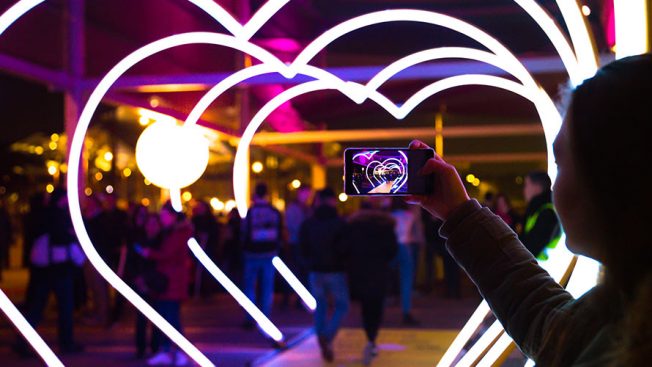Inspiration meets innovation at Brandweek, the ultimate marketing experience. Join industry luminaries, rising talent and strategic experts in Phoenix, Arizona this September 23–26 to assess challenges, develop solutions and create new pathways for growth. Register early to save.
For a long time, the way that our industry measures the value of pop-ups, activations and events has needed an update. Brands aren’t satisfied with seeing a long line of attendees wrapped around the block. Spoiled by the benefits of calculating online ROI, they want proven value for physical experiences, too.
Our solution has been ROE, which stands for return on experience. Like ROI, it provides a way to quantify the direct impact of a brand experience on a consumer, measuring when a human actively participates and engages with that experience. It also shows why these experiences are such effective forms of marketing.
We’ve seen million-dollar experiences that attract a physical attendance of 2,000 people during the time it’s open, which admittedly looks wasteful when you can reach the same amount of people through a targeted keyword ad for less than $500. But calculating ROE, word of mouth, online sharing and earned media demonstrates that an on-site audience of 2,000 people can reach a multi-million global audience. If experiences are exciting, meaningful and different enough, they evoke the true potential of consumers.
But how do you create an experience that can deliver on the promise of ROE? It takes identifying and infusing several key ingredients that will help marketers bring a quantitative approach to a medium that’s been historically qualitative.
Choose the world that meets your needs
In measuring ROE, different spatial flows create different outcomes, so brands creating experiences need to carefully analyze the cost and benefit that’s inherent in the type of world they decide these experiences should inhabit: guided, open or programmatic.
Similar to the meandering path inside an IKEA store, guided consumer worlds lead attendees on a one-way journey with a defined entry and exit. This experience duration is highly predictable and happens like clockwork. It takes less effort to be completed and also guarantees that consumers touch and hopefully share all experiences throughout.
Open world experiences invite self-discovery and build an overall higher experience IQ because they are less prescriptive and more adventurous. While these take more effort from the consumer to explore, the overall experience feels more natural and less forced. Levels of engagement, interactivity and overall time spent are less predictable and depend heavily on the consumer’s desire to explore the space, which can be increased by elements such as comfortable seating possibilities, workshops and food vendors.
Lastly, programmatic worlds are scheduled performances, classes, workshops and experiences that provide brands with a great tool to control attendance and the time spent during the brand experience.
Engage all of the senses
Physical experiences need to be everything that digital is not. While digital is all about volume, commoditization and sales, physical experiences should be about authentic storytelling, forming connections and adding weight and texture to any brand.
When making an immersive experience, it’s crucial to engage all senses, especially the ones that can’t be reached through devices. This means everything from sounds associated with the brand experiences to the temperature in the space to the smells of the flowers.
Create a system for unobtrusive measurement
For every experience, it’s crucial to make the measuring method unobtrusive so marketers receive truly natural, non-incentivized behaviors and higher rates of sharing. But don’t cheat. Measure physical human interactions first, not devices, since existing digital measuring tools alone won’t help brands assess ROE.
Here is where brands have to put in the groundwork to team up with agencies to develop custom solutions that truly measure when and why consumers share, what they look at and how much time they spend at a physical experience.
Ensure shareability
Shareable experiences are already in every experiential marketer’s toolkit. As consumers post pictures, the reward is likes and comments from their audience that then brings awareness to the brand. However, brands have to jump off the Instagram bandwagon and stop underestimating the experience IQ of consumers. A pretty design or colored backdrop alone will no longer trigger sharing.
With this in mind, the question remains: How we can grow experiences to be more interactive and truly immersive beyond a snap? The answer, as always, is a creative idea. A truly thought-provoking, barrier-breaking idea is still the best way to encourage sharing, which then amplifies organically online.
Think less pragmatically, more emotionally
While marketers are used to looking at data through the very rational, pragmatic lens of online ROI, they have to understand that a consumer interacting in a physical space is far more complex than a simple banner click. Experiences trigger an intricate network of peer-to-peer interactions that can contribute to the organic growth and reach of the brand because of a robust ROE.
As marketers learn to address the qualitative, emotional aspects of experiences that ROE communicates, their intuition will become invaluable in building meaningful, compelling, full-sensory activations and events that drive significantly higher shareability and unleash the true potential of consumers. After all, they’re the ones who are willing to share their experience on their platforms. Through tracking how they express their connection to a brand, we can create a metric of success that a subjective assessment simply can’t provide.








